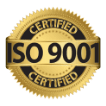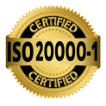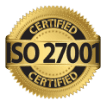In today’s global economy, managing a supply chain is more complex than ever before. From sourcing raw materials to delivering finished goods, every step of the supply chain needs to be optimized to ensure timely delivery, cost-effectiveness, and customer satisfaction. This is where Supplier Portal Management comes in.
Mercatere is a cloud-based platform that enables organizations to manage their supplier relationships more efficiently. Our platform allows suppliers to access critical information, collaborate, and communicate with the organization. In this blog, we will discuss how to leverage Mercatere to improve supply chain performance. Supplier portal management encompasses a range of activities, including supplier onboarding, procurement, invoice management, supplier performance tracking, and more.
Why do businesses need Supplier Portal Management?
In today’s fast-paced business environment, supply chain efficiency and agility are critical to success. Supplier portal management offers numerous benefits that can help businesses achieve these goals, including:
Improved collaboration and communication:
A supplier portal provides real-time visibility into procurement processes, enabling businesses to monitor supplier performance, track orders, and manage inventory levels. This visibility enhances transparency, which is essential for effective supply chain management.
Enhanced visibility and transparency:
A supplier portal provides real-time visibility into procurement processes, enabling businesses to monitor supplier performance, track orders, and manage inventory levels. This visibility enhances transparency, which is essential for effective supply chain management.
Increased efficiency and cost savings:
By streamlining procurement processes, supplier portal management reduces lead time and costs. Automation reduces manual effort, minimizing errors and increasing efficiency, leading to cost savings.
Improved supplier performance:
Supplier portal management enables businesses to track supplier performance, identify areas for improvement, and provide feedback to suppliers. This feedback loop enables suppliers to improve their performance, leading to a better supplier relationship and improved supply chain performance.
Mitigated risks:
Supplier portal management helps businesses mitigate risks associated with supplier relationships. By tracking supplier performance, businesses can identify potential risks and take steps to mitigate them before they become major issues.
Best Practices for Supplier Portal Management:
Steps to Implement Supplier Portal Management:
Identify the right technology
Selecting the right technology for your supplier portal is crucial. Consider your organization’s needs and requirements when evaluating potential solutions.
Customize the portal to meet your organization’s needs
Every organization has unique requirements, and a supplier portal should be customized to meet them. Work with a vendor or consultant who can help you customize the portal to meet your organization’s specific needs.
Onboarding suppliers and providing training
Onboarding suppliers onto the portal is critical for its success. Ensure that suppliers receive training and support to use the portal effectively.
Monitor and measure performance
Monitor the portal’s usage and measure KPIs regularly to identify areas for improvement. Use this information to make data-driven decisions that improve the portal’s effectiveness and efficiency.
Challenges while implementing Supplier portal management
Implementing and managing a supplier portal can be challenging for businesses. Some of the common challenges associated with supplier portal management include:
- Complexity: Setting up a supplier portal can be complex, requiring technical expertise and resources. Customization of the doorway to meet specific business requirements can also add to the complexity.
- Integration with existing systems: Integrating a supplier portal with existing ERP, CRM, or other systems can be challenging. Integration issues can result in data inconsistencies, errors, and delays.
- User adoption: Convincing suppliers to use the portal can be a challenge. Many suppliers may be reluctant to use new systems or lack the technical expertise to use the portal effectively.
- Security and data privacy: Supplier portals often involve the exchange of sensitive data, such as financial information, trade secrets, or customer data. Ensuring data privacy and security can be a significant challenge.
Our solutions:
Impiger Technologies offers a comprehensive supplier portal solution that addresses these challenges. Their solution offers several key features that can help businesses implement and manage a supplier portal effectively. Some of the key features of Impiger’s supplier portal solution include the following:
- Customization: Mercatere can be customized to meet specific business requirements. This ensures that the portal is tailored to the business’s unique needs, reducing complexity and improving efficiency.
- Integration: Our product is designed to integrate with existing ERP, CRM, and other systems seamlessly. This integration ensures data consistency, reduces errors, and minimizes delays.
- User adoption: Mercatere is designed to be user-friendly, ensuring that suppliers can use it effectively. Impiger provides guidance and support to suppliers to ensure that they can use the portal with ease.
- Security: Impiger’s supplier portal solution is designed with security in mind. The solution uses industry-standard security protocols to maintain data privacy and security.
Final Thoughts
In conclusion, supplier portal management can significantly improve your supply chain performance by enhancing collaboration, visibility, and efficiency. Impiger Technologies can help you implement these services by providing custom solutions that meet your business needs. By leveraging supplier portal management, businesses can optimize their supply chain processes, reduce costs, and gain a competitive advantage. Don’t wait any longer; start improving your supply chain performance today with Mercatete Impiger Technologies’ supplier portal management solutions.











